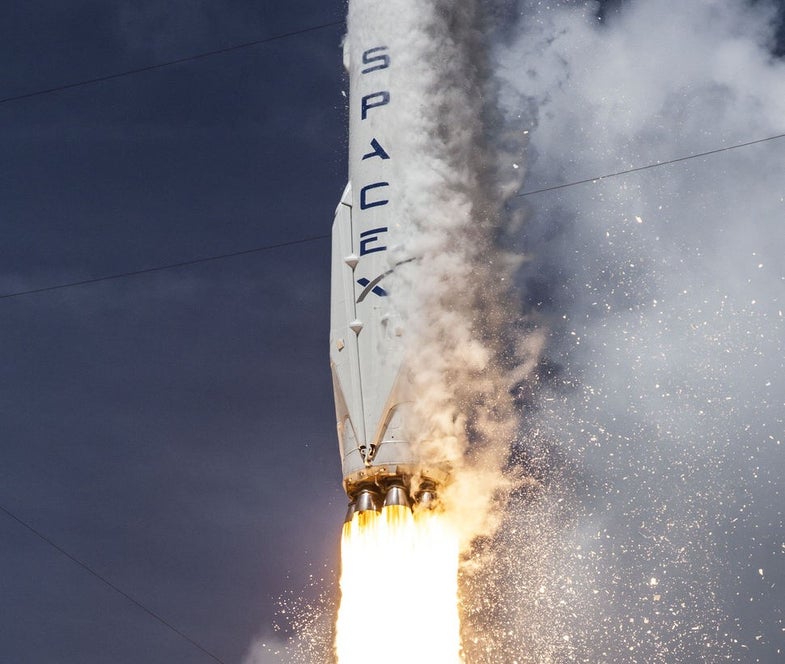SpaceX Finally Knows What Caused its Falcon 9 Rocket to Explode
Elon Musk says the problem has "never been encountered before in the history of rocketry.”

After SpaceX’s Falcon 9 rocket exploded while being fueled for a test fire in September, the company said it would be launching again by November. It appears the skeptics were right: It’s now November, and SpaceX rockets still aren’t flying—though the company is making progress. CEO Elon Musk says the company has identified the cause of the September explosion, and the Falcon 9 could be fixed and flying by mid-December.
Yesterday Musk explained to CNBC why it took so long to get to the bottom of the explosion: “It was a really surprising problem. It’s never been encountered before in the history of rocketry.”
The problem has to do with some super-cold oxygen reacting with the carbon fiber composites within the fuel tank.
The Falcon 9 rocket flies by combusting liquid kerosene with oxygen. Because there’s no oxygen in space, the rocket needs to bring its own. To pack in as much fuel as possible, most rockets cool oxygen gas until it’s liquefied; SpaceX takes it one step further by cooling it even more, possibly to increase the density and thus how much fuel the rocket can carry.
Well, it turns out that the supercooled oxygen might have been too cold—cold enough to actually solidify.
SpaceX likes its oxygen tanks to be kept at about -340 degrees Fahrenheit, and the stuff ices over at -362 degrees. According to the New York Times, the liquid helium containers inside the oxygen tank could have been responsible for pushing to oxygen over the brink. Helium, which is used to pressurize the oxygen tank, is stored at even colder temperatures than oxygen, at -452 degrees.
Musk didn’t elaborate on how the solid oxygen formed or what happened after that, but the leading theory is that the solid oxygen may have ignited one of three carbon composite helium containers inside the oxygen tank, triggering the explosion that annihilated SpaceX’s launch pad.
“This is the toughest puzzle that we’ve ever had to solve,” Musk told CNBC.
Now that the company has a real lead on the problem, they can get to work on fixing it. SpaceX is targeting a return-to-flight in mid-December, although they haven’t yet revealed what payload will be launched.
[H/T Space News]